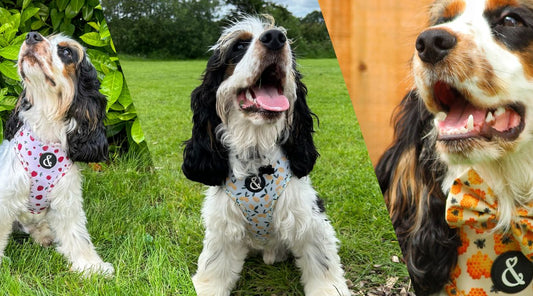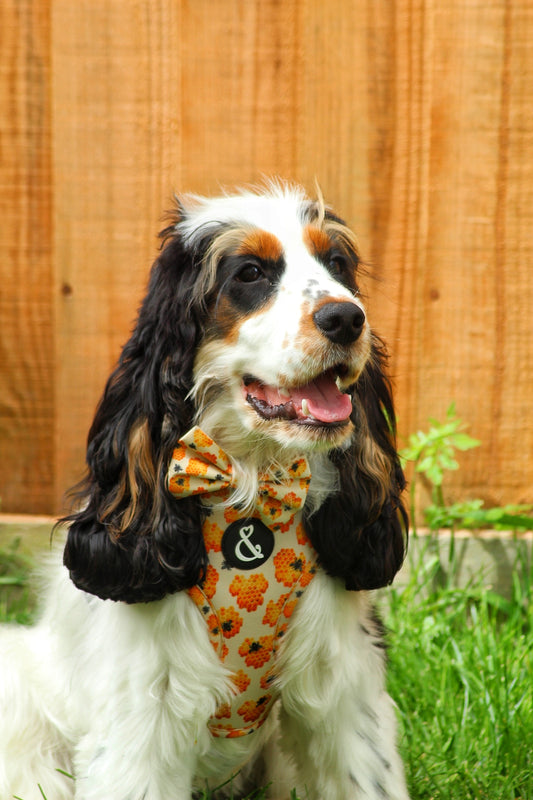
The Best Dog Treats For Your Puppy: Definitive Guide
The Best Dog Treats For Puppies
Choosing the right treats for your puppy can be tricky business. There are so many options available on the market that it gets confusing to pick the best one. Even after you've purchased something, there's no guarantee your puppy will actually enjoy the treats you've selected!
We're all trying to find treats that are not only delicious and motivating for our dogs and puppies, but also healthy and nutritious. After all, nobody wants to compromise on their dogs diet whilst rewarding them. We'll help you with some key tips on how to pick the best treats for your pup, and how to make sure the treats you're selecting are a motivating reward!
Which Treats Does My Puppy Like Best?
Each pup is different, they all have preferences, and it’s important to understand your dog’s favourite treats. Establishing ‘High’ and ‘Low’ value treats, will help you distinguish what actions/tricks deserve which level of treat.
The way we had it explained to us was through the use of a puppy buffet. A puppy buffet is essentially a taste test showdown between all the different treats you give your puppy. Here's how it works: you'll want to grab two different treats and hold one in each hand, keeping them about a meter apart.
When you call your pup over, chances are they'll make a beeline straight for one of your hands – the one holding the treat they class as a higher value. It's like they're voting with their nose and their feet for the more high-value, irresistible option.
This little game gives you a revealing glimpse into your puppy's personal preferences. The treat that gets the most attention? That's the one earning top marks in your pup's book as the most motivating, rewarding snack.
Make a note of what treat was their favourite, and keep repeating this process until you have a list of highest value, to lowest value. With this knowledge, you can tailor your treat stash accordingly for training purposes, and ensure that a basic trick is not getting an exceptional reward in the eyes of your puppy!
This type of game doesn't always translate into text format well, so we've got a video guide attached below, if you prefer to learn visually. These dogs are slightly better behaved than Blue, but the concept is still there!
Different Types of Puppy Treats
In reality, the ‘best’ treat doesn’t really exist, there are certainly treats that are healthier for you puppy, but it's important to remember that every dog likes different tastes and textures, and one dogs favourite treat might be another dogs least favourite!
Crunchy Treats
Crunchy treats are typically low calorie, designed for everyday treating. They often have a nutritional value similar to kibble and come in a range of flavours and sizes. Due to the chewing requirement, they aren’t always suited to young puppies without a full set of adult teeth, or older dogs that may struggle to break foods down.
Soft Treats
Soft treats tend to be a higher value reward to dogs, with their strong scents being a high value treat, making them ideal for training. These are often meat based, such as cured venison, buffalo, or chicken. Being soft, they are easier to chew and therefore, more suited to puppies or older dogs, you can also cut down these softer treats into smaller pieces, making your treats last a little longer during frequent training sessions
Spreadable Treats
Most dog owners will have a lick mat or two somewhere. These are perfect for enrichment and long lasting rewards. Again, as they are soft, they are suitable to all. Spreading these on lick mats provides stimulation for the puppy, whilst also feeling like a treat. Lick mats not only feed your dog, but also help to work their mind, tiring them out in the process! When buying spreadable's, make sure to read the ingredients as some can be particularly high in carbohydrates and fats which will be less nutritional for your dog. If your dog has a sensitive stomach, it is important to check that the ingredients wont be too rich for their digestive system. It's also worth pointing out that just because you can fill a lick mat, it doesn't mean you need to! Follow any serving guides on your spreadable treats nutritional section.
Dental Treats
Dental treats and chews can be offered as a reward whilst also offering enrichment for your puppy. Chewing receives stress and anxiety for dogs, so these treats can help your dog manage their stress and anxiety. Dental sticks in particular, are designed to remove plaque and bacteria that could lead to dental disease.
Calming Treats
Calming treats have been found to reduce symptoms of anxiety, through providing a soothing effect for your dog. The ingredients in these treats provide anxiety-reducing benefits which can help to calm your dog. These can be used for moments of anxiety but also as a soothing treat before your dog settles down for a nap.
Evaluating Treats To Purchase
When it comes to evaluating treats, there are a few key factors you need to keep in mind. First up, check the nutritional values – A dogs diet is predominantly protein, so we're aiming for treats that provide a good balance between fats and protein content. You'll also want to take a good look at the ingredients list, just to make sure there's no additional ingredients that may not agree with your puppy.
Don't just skim through the numbers though, pay attention to the nutritional breakdown. The best healthy options tend to have a limited number of high-quality, simple ingredients you can actually pronounce – things like real meat instead of a bunch of additives and fillers.
The feeding guidelines on the pack are worth a glance too. They'll let you know just how much of these treats your puppy can safely have without overdoing it. If you're frequently rewarding your puppy during training, consider cutting the treats down in size.
How Many Treats is too Many for My Puppy?
The question everyone always wants to know the answer to, how many treats can I feed my dog? Unfortunately there isn't a one size fits all answer to this question, because it depends on the breed of your puppy, their current size, and nutritional value of the treat. As a general rule, the higher the nutritional value, the more you can feed, but make sure to look at any serving suggestions on the packaging.
Keep it Simple
At the end of the day, sticking to some basic guidelines on distinguishing high-value treats from low-value ones can go a long way While there are plenty of factors to juggle, like nutrition, ingredients, and that all-important tail-wagging deliciousness factor, you don't need to overcomplicate things.








